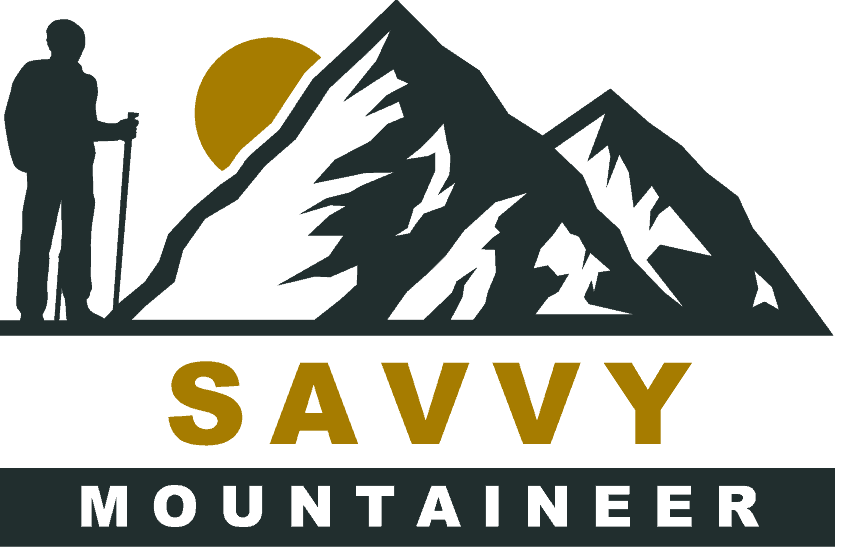Embracing the Wilderness: What is Primitive Camping?
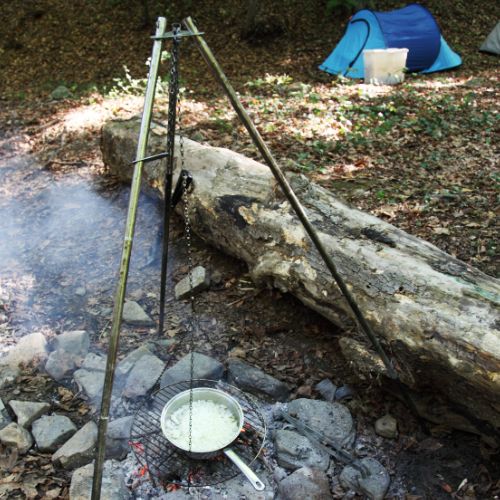
What is Primitive Camping? It’s a question that stumps many.
In fact, when it comes to exploring the great outdoors, their #1 confusion point is…
Primitive camping.
They have NO idea what it entails. But this is what separates the casual camper from the true adventurer. However, if you don’t know how to embrace primitive camping effectively, you’ll never reach this level of wilderness exploration.
Folks, understanding primitive camping isn’t easy.
Take for instance one outdoor enthusiast who recently told me he ventured into remote woods without adequate preparation… only to be lost and scared for hours before finding his way back.
Now he’s hesitant about trying again, not to mention worried he’ll never fully experience nature in its raw form.
Table of Contents
Understanding Primitive Camping
If you’re looking to step away from crowded campgrounds and experience the great outdoors in its rawest form, primitive camping is your answer. This type of outdoor adventure requires a certain level of survival skills and self-reliance as it takes place far off beaten paths, devoid of any modern conveniences.
Defining Primitive Camping
The crux of primitive camping lies not just in surviving but thriving amidst nature with minimal resources at hand. Think of setting up a tent under starlit skies or starting a fire without lighters; locating safe drinking water sources or understanding wildlife behavior – all while being miles away from civilization.
This might sound daunting initially but when done right, there’s an unparalleled sense of freedom that comes along with choosing your own remote areas for camping destinations. It’s about embracing simplicity over luxury – trading hotel rooms for sleeping bags and restaurant meals for cooking supplies prepared on open fires.
The Philosophy Behind Primitive Camping
Beyond the thrill and challenges involved, what truly sets apart this style are the values it promotes: respect towards nature coupled with minimalist living principles. The philosophy behind primitive camping isn’t merely about escaping modern life; rather, it encourages us to appreciate our natural surroundings more deeply by leaving them untouched during our stay.
A significant part involves practicing “Leave No Trace” ethics which emphasize preserving these pristine environments by minimizing human impact wherever possible – be it responsibly building campfires using deadwood found nearby instead of chopping down live trees or packing out food waste instead of leaving behind anything that could disrupt local ecosystems. All such practices contribute toward ensuring we leave nothing but footprints after each adventurous journey into wild terrains.
Key Takeaway
Primitive camping is about embracing the raw beauty of nature, surviving and thriving with minimal resources. It’s not just an escape from modern life but a commitment to respect nature and practice minimalist living principles, including ‘Leave No Trace’ ethics to preserve the environment.
Pros and Cons of Primitive Camping
Primitive camping, a type of wilderness adventure that takes you away from the usual crowded campgrounds into remote areas, has its unique set of advantages as well as challenges. Let’s delve deeper to understand what makes it so appealing for some while daunting for others.
Advantages of Going Primal
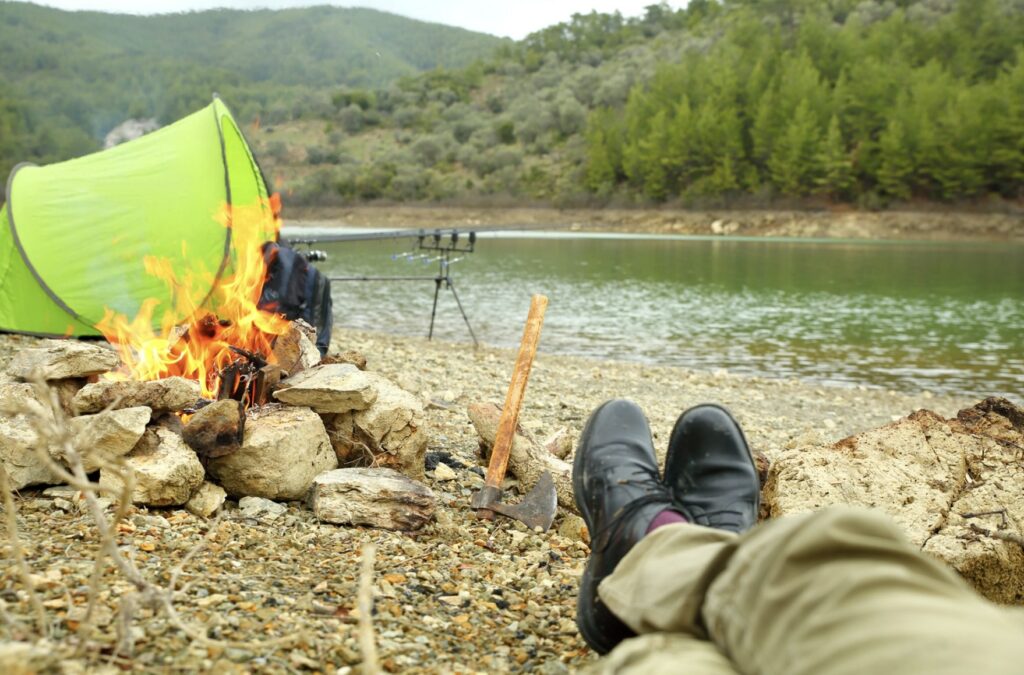
The simplicity and rawness offered by primitive camping is unmatched. Stripped of modern conveniences like running water or easily accessible amenities, this form allows you to truly connect with nature in an intimate way – one reason why many choose such backcountry adventures over RV camping or glamping.
In addition to spiritual fulfillment, there are practical benefits too. It’s often more cost-effective compared to other forms such as cabin rentals; plus solitude – fewer crowds mean peaceful contemplation without distractions from neighboring campers.
Challenges Faced in Primitive Camping
The absence of facilities presents certain hurdles when going primal: no restrooms nor picnic tables await you out in the wild; instead, everything needed must be carried along including shelter materials (like tents) and cooking supplies. Survival skills become paramount here – starting a fire using natural resources can seem intimidating, especially if it’s your first time experiencing this version of the great outdoors life.
Nature isn’t always predictable, which means extra gear may need to be packed last minute due to weather changes. For instance, rain gear might come in handy during unexpected showers, whereas wildlife encounters require knowledge about local fauna behavior patterns.
Essential Gear for Primitive Camping
The success of your primitive camping trip hinges on the gear you bring along. The right equipment ensures a safe and enjoyable adventure in nature’s playground.
Tent Options for Remote Locations
Selecting an appropriate shelter is paramount when planning a backcountry excursion. A lightweight, compact backpacking tent offers mobility during long hikes, making it ideal for this type of outdoor experience.
If traveling by vehicle to more easily accessible campsites, consider using rooftop tents that attach directly onto your car’s roof rack. This elevated sleeping platform keeps you off the ground and minimizes potential wildlife encounters – certainly something to think about as part of your wilderness survival skills.
Food Supplies & Water Purification Methods
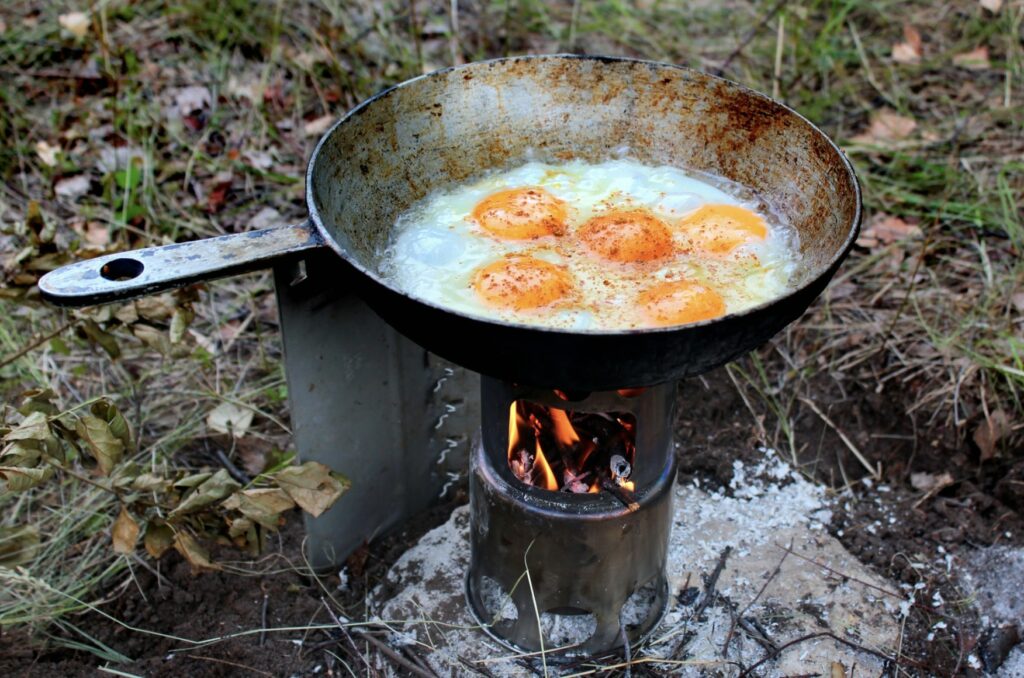
Packing smart can make all the difference while embarking on a wild camping journey into remote areas where modern conveniences are scarce or non-existent. Opt for food items like canned goods, dried fruits, nuts, and energy bars which do not require refrigeration but still provide essential nutrients.
In addition, carrying water purification tablets or filters becomes indispensable. They ensure access to clean drinking water even if running water isn’t readily available. A portable backpacking stove also comes in handy, especially during colder weather conditions, enabling hot meals at the campsite. Just remember – fire safety first.
Importance Of A First Aid Kit In Wilderness
A well-stocked first aid kit should be high up on any camper’s packing list given its life-saving potential under unforeseen circumstances far from medical facilities. Bandages, antiseptic wipes, tweezers, pain relievers, among other essentials, should ideally be included in this box according to NOLS (National Outdoor Leadership School) guidelines.
In addition, there are a few more comfort-enhancing items: Sunscreen protects against harmful UV rays; Toilet paper because nature might call anytime; Rain gear helps stay dry during unexpected showers; Flashlight aids navigation post-sunset; Waterproof matches come in handy when starting fires under damp conditions, etc.
Remember though – always adhere to “Leave no trace” ethics, ensuring our beautiful natural heritage stays preserved.
Key Takeaway
For a successful primitive camping trip, gear up right. Choose your shelter wisely – lightweight tents for hiking or rooftop ones for car trips. Pack smart with non-perishable food and water purification tools. Don’t forget the first aid kit packed with essentials and some comfort items like sunscreen, toilet paper, rain gear, flashlight and waterproof matches.
Legal Aspects – Permits and Reservations for Campsites
The legalities of primitive camping can seem overwhelming, but they are crucial for preserving our natural environments and ensuring a safe and enjoyable experience. This article will provide guidance on obtaining the necessary permits or reservations for camping in compliance with applicable state laws and park regulations.
Navigating Backcountry Permit Systems
A backcountry permit is often required when planning to camp on public lands within national parks. The purpose is to regulate foot traffic in sensitive ecosystems, prevent overcrowding at popular destinations, and maintain the wilderness character of these areas.
To secure your permit, submit an application detailing your intended route along with the duration of stay, among other details. Applications are typically submitted online or directly at ranger stations located near most park entrances.
Bear in mind that certain sought-after locations have limited availability due to high demand; hence, it is advisable to apply well ahead before embarking on your primitive camping trip. Remember to look into the regulations of each park regarding where camping is permitted prior to your trip.
How to Reserve Your Ideal Campsite
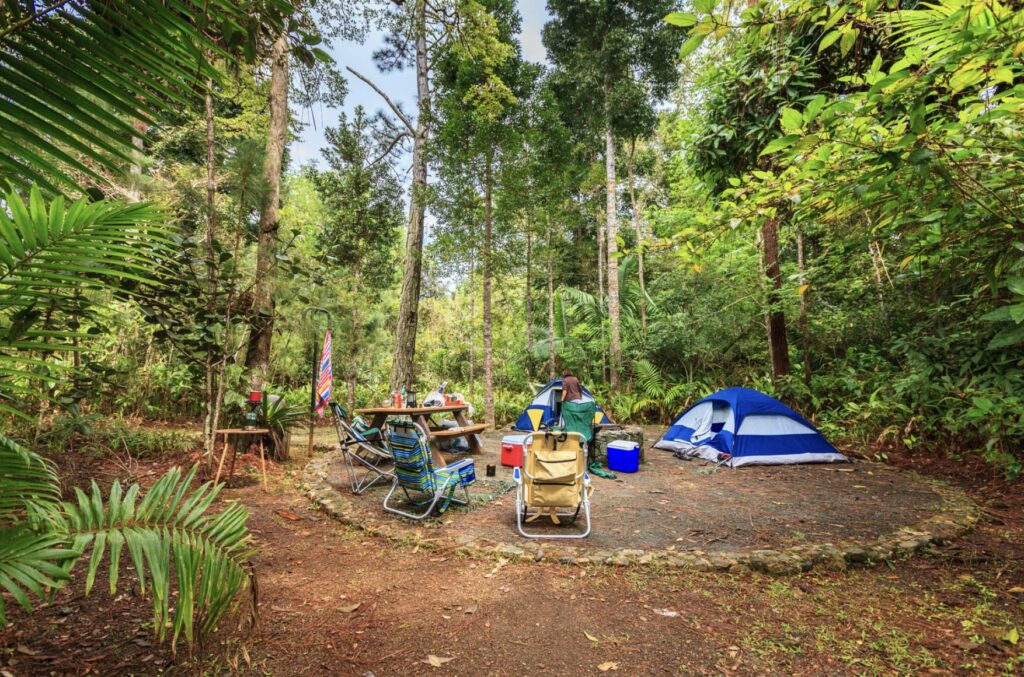
If dispersed wild camping isn’t quite what you had planned but you still want something more rustic than crowded campgrounds, then making reservations becomes necessary, especially if the chosen location falls under the designated primitive campsites category. Many state parks use online systems like ReserveAmerica, which allow users to reserve sites up to months in advance based on preferred dates and site characteristics such as proximity to water sources, scenic views, etc. Always review cancellation policies carefully too should plans change unexpectedly.
- Familiarize Yourself With Rules: Parks have different rules concerning fires, pets, wildlife interactions, etc., so make sure you understand and comply with them fully prior to arrival to avoid penalties and unpleasant surprises during the trip.
- Plan Ahead: Your chances of securing the desired location increase greatly if you apply early, especially during peak seasons when competition for spots.
Key Takeaway
Primitive camping requires a good grasp of legalities, from securing backcountry permits to reserving campsites. It’s crucial to familiarize yourself with park rules and apply early for high-demand locations. Always review cancellation policies in case plans change unexpectedly.
Popular Spots For U.S. Based Primitive Campers
The United States, with its varied landscapes and ecosystems, offers a wealth of opportunities for those seeking the primitive camping experience.
Best Destinations For Beginner Level Primitive Campers
If you’re new to this type of adventure, there are several locations that can provide an ideal introduction. Lost Maples State Natural Area in Texas, known for its vibrant fall colors and serene hiking trails, is one such place where beginner level campers can enjoy nature while still being within reach of modern conveniences if needed.
In contrast to the desert-like environment at Lost Maples, Lake MacBride State Park in Iowa offers lush forested hillsides surrounding a picturesque lake perfect for fishing or boating alongside your camping trip.
Green Ridge Forest in Maryland, on the other hand, presents a unique opportunity to explore the wilderness of the East Coast. It’s important to note that these places require more advanced survival skills but reward unparalleled tranquility and untouched natural beauty.
Rugged terrains and unpredictable weather conditions may pose challenges but also bring forth unique opportunities to connect on a deeper level with the environment around us. If you’re prepared to experience the wildest of Nature, then take a leap off the beaten track and discover what lies beyond. Remember to always respect local regulations and ensure minimal impact upon the ecosystems we visit.
A Step Further: Advanced Locations
Moving further up the skill ladder brings options like Shenandoah National Park in Virginia. This national park provides challenging terrain coupled with breathtaking views, making it worth every bit of effort put into reaching here.
Key Takeaway
Primitive camping offers a chance to immerse yourself in nature’s raw beauty, from the vibrant hues of Texas’ Lost Maples State Natural Area to the lush forests surrounding Iowa’s Lake MacBride. For those seeking more advanced challenges, Maryland’s Green Ridge Forest and Virginia’s Shenandoah National Park await. Always remember: respect local regulations and minimize your impact on
Leave No Trace Ethics in the Primitive Camper Community
The “Leave No Trace” principles are a cornerstone of the primitive camping experience. These guidelines ensure that we minimize our impact on the great outdoors, preserving it for future generations.
Let’s look into these steps and understand how to incorporate them into your next primitive camping trip.
1. Understanding the Principles
To truly embrace Leave No Trace (LNT) ethics during your wilderness adventures, you first need to grasp what they entail. Developed by the Leave No Trace Center for Outdoor Ethics, these seven tenets provide an invaluable roadmap for any camper looking to reduce their environmental footprint while enjoying nature in its purest form.
You’ll find yourself planning ahead more thoroughly once you’re familiar with LNT – researching local regulations or sensitive areas before setting off on your adventure is crucial if you want to avoid causing unintentional harm. This might involve finding out where exactly one can pitch a tent or build a fire pit within national parks and state lands without disrupting local ecosystems or spoiling other visitors’ experiences.
2. Implementing Best Practices
LNT isn’t just about understanding; it’s also about implementation – putting those principles into practice when packing up your camping gear and heading out there among remote areas far from crowded campgrounds.
- Durable Surfaces: This refers primarily to established trails and campsites which won’t erode underfoot as easily as grassy meadows would do. Be mindful not only of where you walk but also of where you set your base, ensuring minimal vegetation damage around the chosen site.
- Garbage Disposal: A key aspect here involves waste management. Both solid litter and human waste require careful disposal methods, especially in locations lacking amenities like trash cans and toilets. The National Park Service suggests best practices for handling such situations, thereby preserving the sanctity of natural surroundings.
Key Takeaway
Primitive camping is all about embracing the “Leave No Trace” ethics, which guide campers to minimize their environmental impact. This involves understanding and implementing these principles like researching local regulations before setting off, choosing durable surfaces for campsites, and managing waste properly.
FAQs in Relation to What is Primitive Camping?
What defines a primitive campsite?
A primitive campsite is defined by its lack of modern amenities such as restrooms, picnic tables, or water sources. It’s typically located in remote areas, offering an immersive nature experience.
What is primitive camping called?
Primitive camping can also be referred to as backcountry camping, wilderness camping, or dispersed camping depending on the region and specific conditions.
What is the difference between primitive and non-primitive camping?
The main difference lies in the amenities provided. Non-primitive campsites offer facilities like bathrooms, electricity, and running water, while primitive sites do not.
What is the difference between dispersed camping and primitive camping?
In essence, they are similar; both involve setting up camp outside designated areas with no services. However, dispersed specifically refers to public lands outside of recognized campsites.
Conclusion
Primitive camping is about embracing the wilderness, relying on your skills, and enjoying solitude. It’s an adventure that takes you away from the modern world into remote areas.
This form of camping has its own charm with a closeness to nature, cost-effectiveness, and lack of crowds. But it also comes with challenges like survival skills requirements and the absence of comfort facilities.
Packing for primitive camping requires careful planning. From food supplies to water purification options and first aid kits – every item counts when you’re in the wild.
Navigating legal aspects such as backcountry permits or campsite reservations can be a complex but necessary part of this journey. And then there are beautiful spots across the U.S waiting for those willing to take up this challenge.
But remember, respect towards nature should always come first. The ‘Leave No Trace’ ethics are crucial in preserving our natural heritage while we enjoy these adventures.
If you’re ready to embark on your next mountainous adventure through primitive camping, let Savvy Mountaineer guide your way! We provide resources for everything from gear selection to identifying ideal campsites – all aimed at making your trip safer, enjoyable, and memorable. Start exploring now!

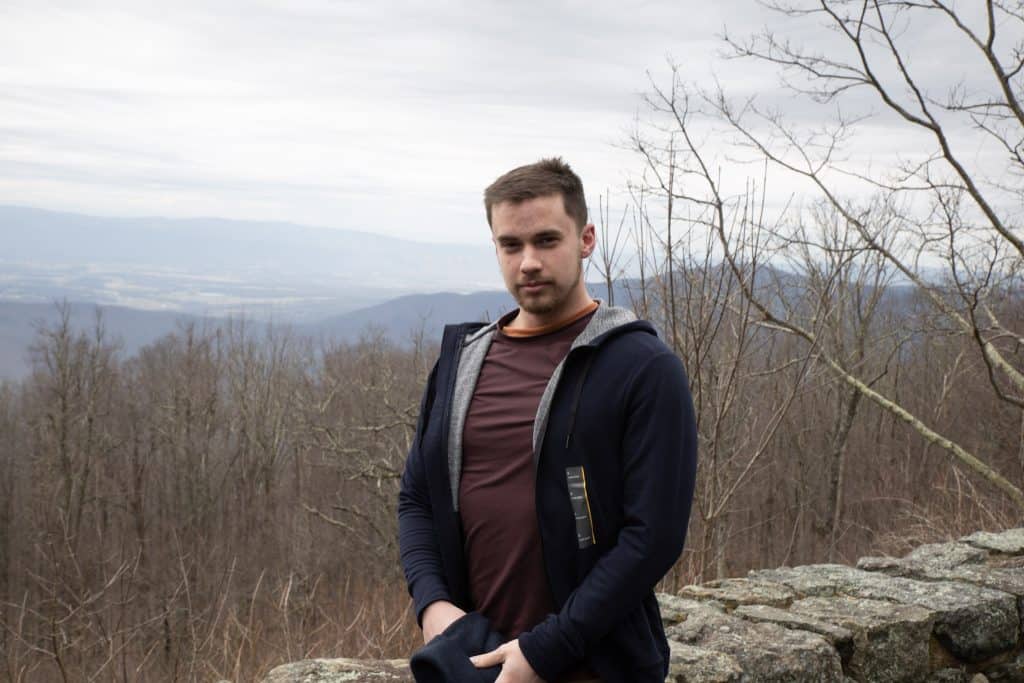
Deeba & Matt
About the Authors
Intrepid content creators and relentless hiking enthusiasts. With a passion for travel and adventure, Matt & Deeba are never one to shy away from a daring challenge.
